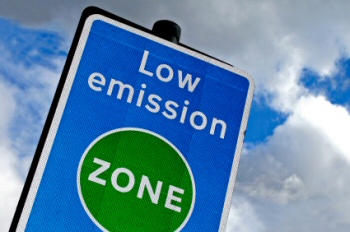London's Low Emission Zone
 The Low Emission Zone in London is an established area of the city that has been specially designated for use by low emission transportation. It was originally introduced in 2008 as a proactive measure to combat the growing problem of air pollution in the Greater London area. The zone doesn't necessarily prohibit the use of high emission vehicles. Instead, it levies a daily user fee on every high emission vehicle that operates within the zone.
The Low Emission Zone in London is an established area of the city that has been specially designated for use by low emission transportation. It was originally introduced in 2008 as a proactive measure to combat the growing problem of air pollution in the Greater London area. The zone doesn't necessarily prohibit the use of high emission vehicles. Instead, it levies a daily user fee on every high emission vehicle that operates within the zone.
Where is the Zone?
The Low Emission Zone covers the majority of the Greater London area. It extends north past Enfield, east to Dartford, south to Caterham, and west to Uxbridge. If you are travelling on the M1 or M4, then your travel through the zone will be counted. However, the zone does not cover the M25 as of yet.
How Does it Work?
The premise of the Low Emission Zone is a fairly simple one. It all starts off with a list of known low emission vehicles that transit authorities use as a guide for what vehicles are permissible in the zone. Anyone owning a low emission vehicle as per London guidelines can simply drive their vehicle as they normally would. Most trucks and lorries fall into this category and barely anyone will have to take any further steps. However, you will have to do a bit more if your vehicle is not on this list.
If your vehicle is not on the list despite meeting emission standards, then you will be given the opportunity to register the vehicle with the city. You will need to pass an emissions inspection to qualify your vehicle as a low emission vehicle. This will require you to bring supporting documentation of any low emission upgrades you have made to your car. Once you register, you will be able to freely use the Low Emission Zone without incurring the daily use fee.
Those choosing to not register high emission vehicles will be charged a daily fee for operating it within the Low Emission Zone. This fee is assessed by using cameras to scan the registries of all vehicles operating within the Greater London area. These scans are then cross-referenced against a database of low emission vehicles. If a high emission vehicle is found within the zone, then the owner will have a user fee levied against him or her.
Charges
The charges for using high emission trucks, lorries, and minibuses only apply to diesel vehicles over 1.205 tonnes. The charges for use vary from vehicle to vehicle. As of January 2012, the following charges apply for vehicles of different sizes:
High emission diesel lorries weighing more than 3.5 tonnes are charged Euro 4 for every day they operate within the Low Emission Zone.
Minibuses and vans weighing more than 1.205 tonnes will be charged Euro 3 for every day they operate within the Low Emission Zone.
Motor caravans and ambulances weighing between 2.5 and 3.5 tonnes will be charged Euro 3 for every day they operate within the Low Emission Zone.
Diesel Vehicles are Targeted
It's worth noting that the programme is meant to target diesel vehicles over a certain tonnage that have high emission output. This program is not meant to go after the average car owner that lives within the city limits. Rather, it is meant to encourage business owners to undertake upgrades of their vehicle fleets to help the United Kingdom meet stringent demands on carbon emissions by 2050. Upgrades of vehicle fleets also may possibly be financed through the Green Investment Bank of the United Kingdom.
